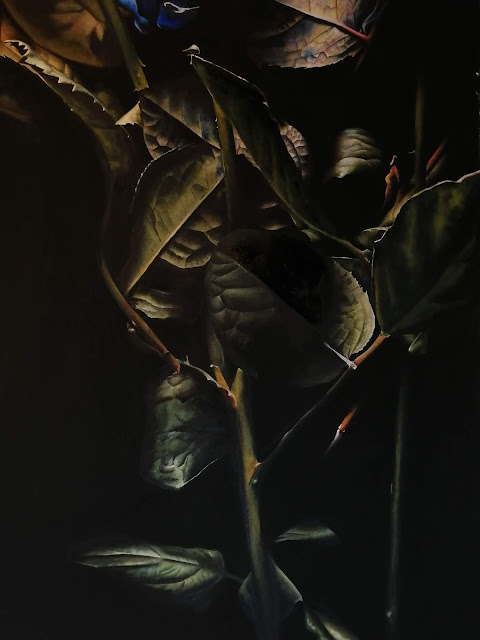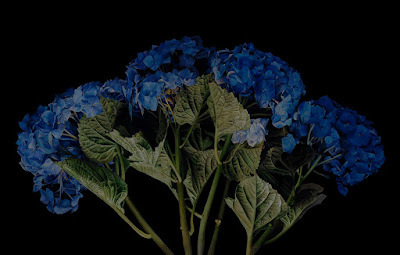"The fear of being abandoned. The terror of being lonely forever. The anxiety of being utterly dependent upon another. The panic of unbearable vulnerability and exposure. The dread of the looming death of yourself and everyone around you. These are the great fears that come as you wake, as you fall asleep, and as you dream through this life.
But perhaps the greatest fear of all is the fear of being loved. We don’t really see it this way, though. For when you are really loved, when you are entirely seen, when you are fully held, it is the end of your world as you know it. You will never be the same. You will never again be able to pretend that you are other than perfect and precious as you are. And that is terrifying.
Life is always seeing you in this way.
You long to be loved, to be seen, but please know that the implications are immense; they are cosmic. To allow yourself to be loved in this way a part of you must die. Everything you thought you weren’t must be surrendered. You must let go of the stories of the unlovable one, the awakened one, the special one, the imperfect one, and the despairing one. Love wishes to reveal your nakedness, to remove your clothing, and to burn away all that is false and less than whole within you. What you are is a raging firestorm of creativity, sensuality, openness, warmth, and kindness.
In this way, love is a destructive process, for it comes to re-order everything you thought you knew."
Matt Licata in Many Voices
 |
| Christmas Day, Watercolour on paper, 30 x 21 cm, J R Shepherd (2019) © |
The Blue Rose paintings - there are three so far. It is a muse I keep returning to. There's just something about its artificialness. A Rose that has been deliberately altered by mankind using synthetic dyes is for me representative of our unwavering quest for perfection and wholeness and the sorrow this obsession can bring. The first Rose 'Supernova' (bottom of the post) was completed in the summer of 2018, then, after an incredibly painful Christmas in Australia, I completed 'Christmas Day' (above). I thought that would be it, but no... this summer, in the chaos of eclipses and Brexit I returned to the roses again and produced 'Instar', where the blue rose is a mere speck in the throng of insanity.
"No longer seek happiness—wanting it only separates you from realizing the profound sense of wellbeing that is only present in the absence of desire. "
Desire is full of endless distances. As I continued to paint the texture of longing I put the finishig touches onto 'Christmas Day' after a 7 month break. It was a painting that I had originally begun whilst recuperating alone in a house in Melbourne on December 25th. It's about heartbreak, there's no way around it. I was broken when I did this. It is the sorrow and bitter disappointment of blue.
"Heartbreak is unpreventable; the natural outcome of caring for people and things over which we have no control… Heartbreak begins the moment we are asked to let go but cannot, in other words, it colors and inhabits and magnifies each and every day; heartbreak is not a visitation, but a path that human beings follow through even the most average life. Heartbreak is an indication of our sincerity: in a love relationship, in a life’s work, in trying to learn a musical instrument, in the attempt to shape a better more generous self. Heartbreak has its own way of inhabiting time and its own beautiful and trying patience in coming and going".
David Whyte
 |
| 'Instar', Blue Rose, Watercolour and charcoal on paper, 56 x 76 cm, WORK IN PROGRESS |
Above and below is 'Instar'. It was painted eight months after 'Christmas Day' and is just as much about longing as all the other works. This piece for me is about being smothered and longing to break free. About being stuck, trapped and hidden. Similar themes to Leafscape and my previous post on 'The Lady of Shallot'. It's about chaotic politics, bureaucracy, a broken English Rose, an Albion with no plan and the dream, the contradictory utopian dream to be free and yet smothered. The dream (blue flower) is almost out of view. You have to squint to find it, but it's still there. A fragment of hope. Alongside all the politics, the painting is also about the responsibility I feel in having to make certain decisions and how we are all the living consequence of our decisions.
"The process of transformation consists mostly of decay and then of this crisis when emergence from what came before must be total and abrupt. The strange redundant word instar describes the stage between two successive molts. Instar implies something both celestial and ingrown, something heavenly and disastrous, and perhaps change is commonly like that, a buried star, oscillating between near and far." Solnit
"One way you know you're approaching core territory is that your experiences become indescribable. Let yourself stand in an inner confrontation with the unknown within you -- and what, in truth, can never be explained." Eric Francis
 |
| 'Instar', Blue Rose, Watercolour and charcoal on paper, 56 x 76 cm, Jessica R Shepherd (2019) © |
As blue unfolds like Mandlebrot Set I sit here madly laughing to myself. You see, for months I have been thinking about 'longing' and how to possibly overcome it in order to see it for what 'it' is and I am finding it incredibly difficult to write a critique about because it is so ingrained in my existence and my ego. So I have to overcome that in order to see it, which, I guess, is what Zen is and no sooner had I considered this as an option, was I reminded of the text I wrote in the Introduction to Blue Flower:
"On a sunny September afternoon, as tired leaves rustled in the garden beyond her window pane, she opened her book 'An Inquiry into Blue' and took out a flatted, knotted mass of black and brown hair that she had collected from a bed at Kensal Green several weeks before. Then, with her other hand she opened her indigo bound copy of ‘Zen and the Art of Motorcycle Maintenance’ and placed the hairs between pages 32 and 33. Once closed, she took the Antwerp blue scarf that was wrapped around her neck and tied it around the book before hiding it at the bottom of her wardrobe..."
There it was... staring me in the face, right at the start of my journey into blue petals. In excitement, I once again pace towards the bookshelf in the room of my childhood and my fingers rummage between Encyclopedias, French Dictionaries and Richard Scarry books until they uncover the crushed Antwerp blue scarf and the broken, worn binding it enshrouds. It was on the same shelf as the 2005 diary on longing. Circles, everything is a circle and there are clues everywhere.
All states of mind are a delusion - transcend them all.
 |
| Studio shot of Instar. |
I have reading to do, but I wonder - will this actually help me as a painter? You see, there aren't many of us who live in the present, detached, with no sense of longing and my mission was always to reach out to souls and help them to see the beauty in flowers by making the flowers humanoid. I do this by incorporating the contradictions and complexities of being a human into my work. How we long for the things that don't really exist. If I were to paint something of no longing, would anyone actually want that on their wall? What even is that? Isn't that what botanical art WAS? A mere document devoid of all feeling; a scientific description of a plant? Surely we all want mirrors? That's why we buy smartphones and take selfies. That's why we fall in love. Surely that's why we buy art? It's a type of therapy.
"Happiness and unhappiness are two aspects of the same thing, which is the false sense of self's search for inner stillness. Happiness always fades and disappears—just as every sort of appearance within awareness does—and in its place, unhappiness inevitably arises."
The cyclical nature of things brings me to the final Rose of my Blue Roses so far. One that I laid out last year... It feels like a long time ago now. The early days of blue, when things felt less convoluted. At the time I wanted to paint grief and the fading and changing of things and this was the outcome, and I called it 'Super Nova', the final stage of a decaying star. But like with all things, when a star dies, new ones are made and supernovae are vital in this, because when they explode, supernovae create shock waves that compress the star material in interstellar space which in turn causes large clouds of gas to form new stars. Such is the circle of things.
 |
| Supernova, Blue Rose, Watercolour and charcoal on paper, 56 x76 cm, Jessica R. Shepherd (2018) © |































